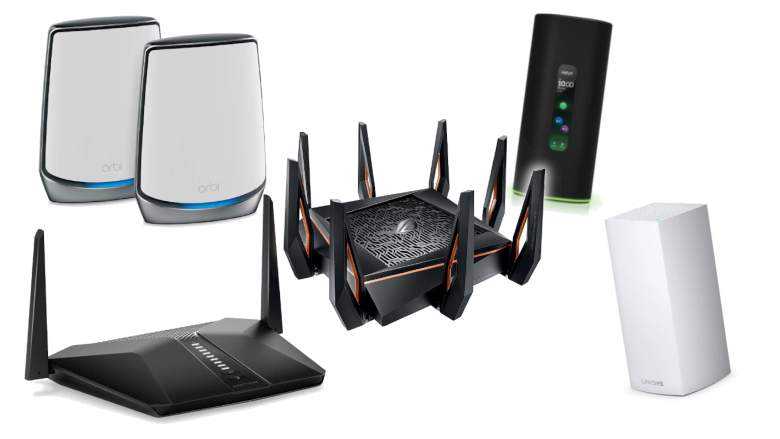
The 802.11ax Internet standard, also called Wi-Fi 6, offers the highest max throughput and the most simultaneous device connections across the networking world. For this reason, it is set up to become the default wireless standard for almost every new smartphone, laptop, and connected home device going forward. So give your PC a Wi-Fi 6 adapter and pair it up with one of the best Wi-Fi 6 routers available.
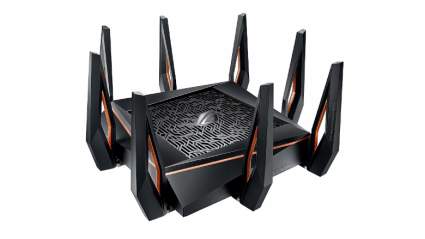
|
Amazon Customer Reviews
|
Price: $547.88 Shop at Amazon | Shop now Read our review |
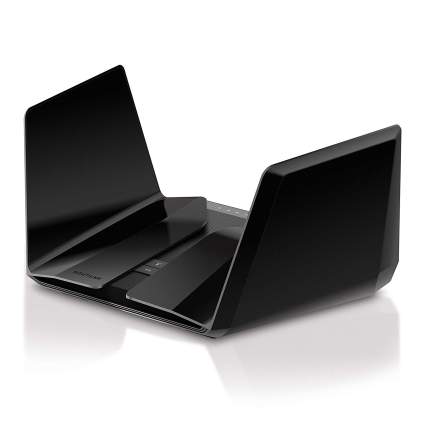
|
Amazon Customer Reviews
|
Price: $368.56 Shop at Amazon | Shop now Read our review |
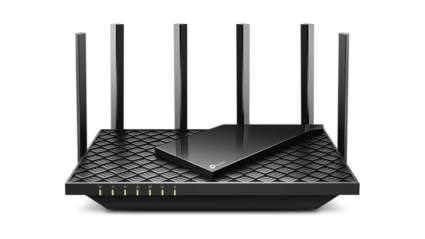
|
Amazon Customer Reviews
|
Price: $116.99 Shop at Amazon | Shop now Read our review |
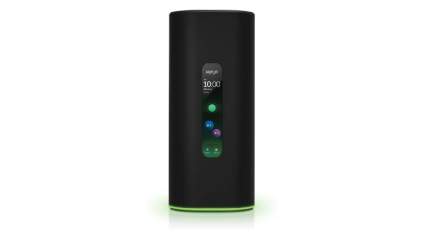
|
|
Price: $379.00 Shop now at store.amplifi.com | Shop now Read our review |
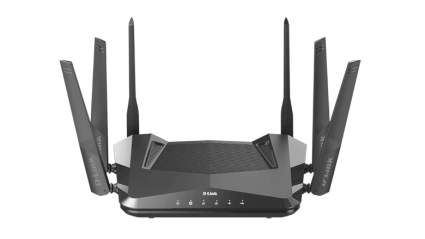
|
Amazon Customer Reviews
|
Price: $274.98 Shop at Amazon | Shop now Read our review |
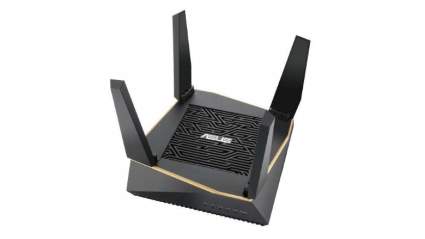
|
Amazon Customer Reviews
|
Price: $199.99 Shop at Amazon | Shop now Read our review |
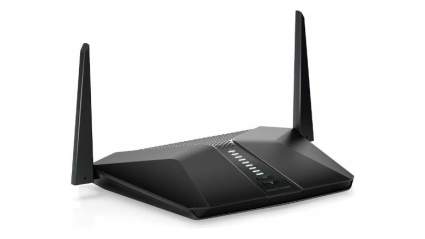
|
Amazon Customer Reviews
|
Price: $95.00 Shop at Amazon | Shop now Read our review |
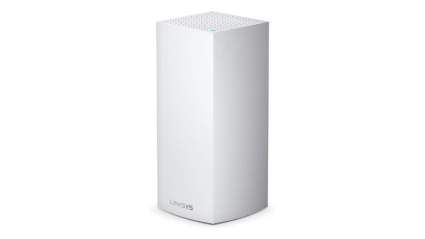
|
Amazon Customer Reviews
|
Price: $398.99 Shop at Amazon | Shop now Read our review |
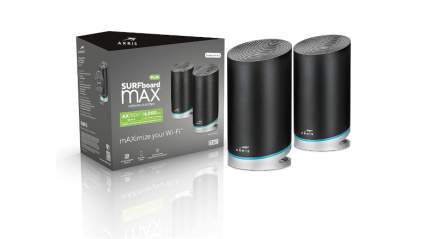
|
Amazon Customer Reviews
|
Price: $184.10 Shop at Amazon | Shop now Read our review |
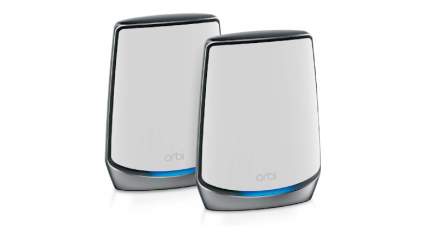
|
Amazon Customer Reviews
|
Price: $386.32 Shop at Amazon | Shop now Read our review |
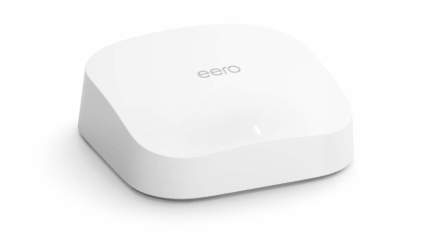
|
Amazon Customer Reviews
|
Price: $199.99 Shop at Amazon | Shop now Read our review |
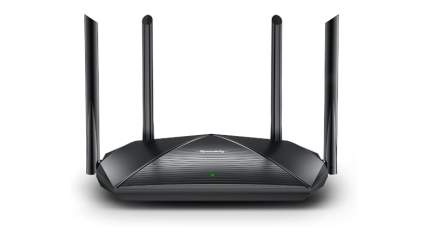
|
Amazon Customer Reviews
|
Price: $30.88 Shop at Amazon | Shop now Read our review |
-
1. EDITOR’S CHOICE: Asus ROG Rapture GT-AX11000
Pros:- Supports multi-gig speeds
- VPN Fusion support
- Great QoS support
Cons:- High price tag
- AiMesh is buggy
- Runs warm
As is to be expected from most products bearing the Republic of Gamers brand, the feature-packed Asus ROG Rapture GT-AX11000 takes Wi-Fi 6 performance to the absolute extreme. And while you don’t have to be playing competitive online gaming to reap the benefits, it certainly helps you get the most out of this high-end router.
The GT-AX11000’s big marketing claim is that it supports an absurd cumulative 10Gbps download speed. But—surprise, surprise—that claim is pretty far removed from the reality of the situation. Considering this router only has a 1Gbps WAN port, Your Internet speeds will be instantly bottlenecked there. The claim makes more sense when you add in the one 2.5Gbps LAN port and four 1Gbps LAN ports, but those are all for wired connections within your local network. Marketing fluff aside, though, this is still a high-performing router.
It can reach 1.2Gbps speeds with WiFi 5 devices and up to 4Gbps with WiFi 6 devices. It has a long signal range that is suitable for most large homes. It also incorporates both OFDMA and 4 x 4 multi-user MIMO, though only for downstreams and not for upstreams. This is expected to be fixed in a future firmware update. For the technologically-disinclined, you can take all this to mean that you will definitely be maxing out your Internet connection with the GT-AX11000.
One of the best parts of this router, though is actually its UI, which provides a user-friendly menu system to access the standard features a good router should have. The only confusing part about it is that Asus uses some proprietary names for features you might otherwise recognize. AiProtection Pro is a basic firewall bundled with some basic parental controls. AiMesh allows you to connect other compatible Asus devices to create a mesh network (although it is very limited in scope). Gamers Private Network Mode allows you to dedicate one of the router’s two 5GHz bands specifically for gaming. It is basically a QoS (Quality of Service) setting.
Many of these settings, like the Gamers Private Network, have preset modes that are meant for gaming use and some are actually quite handy. The VPN Fusion software, for example, supports multiple simultaneous VPN server connections. This is actually a fairly useful feature if you are gaming, as you can bypass your own VPN to connect to game servers while still browsing privately on other devices. And because it wouldn’t be a gamer router without some RGB lights, this router is compatible with the Asus AuraSync software. If you are looking for a high-end router with comprehensive administrative settings then the GT-AX11000 is a great choice.
Looking for even more power? Asus also makes a router that supports 10 Gb Internet. How’s that for future-proof?
Find more EDITOR'S CHOICE: Asus ROG Rapture GT-AX11000 information and reviews here.
-
2. RUNNER UP: Netgear Nighthawk RAX80
Pros:- 8x8 MU-MIMO
- Easy setup
- Supports multi-gig speeds
Cons:- High price tag
- App GUI could be better
- Basic QoS settings
If you are upgrading to Wi-Fi 6 so that you can upgrade the number of concurrent streams on a network, then the Netgear Nighthawk RAX80 should be your top choice. On paper, this router has the widest MU-MIMO support out of any device on the market. Though in practice, this behemoth of a router may actually be overkill for anything other than a coven of gamers.
If you don’t already know, MU-MIMO stands for multi-user multi-input, multi-output. It is a technology that allows a router to split its bandwidth between multiple devices simultaneously rather than rapidly alternating between them. This router supports MU-MIMO for up to 8 devices, which virtually eliminates any local web traffic.
The Nighthawk RAX80 has eight high-powered antennas that can broadcast to a total area of 2,500 square feet. That is enough to cover a medium-to-large home, not factoring in physical impediments like walls and interference from neighboring devices. It has a 2.5Gbps WAN port and four 1Gbps ethernet ports. The last two ethernet ports support link aggregation so you can reach multi-gig file transfer speeds across your local network. It can also host two NAS devices as well with its dual USB 3.0 ports.
This router is highly configurable, making it a great choice for the power user who likes to control how their home Internet traffic functions. It supports useful functions like parental controls, guest networks, DoS, firewalls, and VPNs. It supports QoS too but you have to manually choose which devices get prioritized. The biggest downside is that these are primarily accessed through the Netgear Nighthawk app, whose GUI leaves a lot to be desired from those who have known better.
But for all its merits, the Nighthawk RAX80’s price tag is one that is truly hard to justify. If you are hosting about a dozen hardcore gamers and streamers, then this is the router for you, but if you are looking for a more accessible stepping stone to Wi-Fi 6, there are probably better options for you.
Find more RUNNER UP: Netgear Nighthawk RAX80 information and reviews here.
-
3. TP-Link Archer AX5400
Pros:- 4x4 MU-MIMO
- Easy setup
- Modular mesh system
Cons:- Limited guest network settings
- No multi-gig support
- Runs warm
You don’t have to spend exorbitant amounts of money on a piece of specialty equipment to reap the benefits of Wi-Fi 6. The TP-Link Archer AX5400 is a great example of a value-priced 802.11ax router that brings modern performance without breaking the bank. It has a theoretical throughput of 4.8 Gbps, though this assumes that you have an ISP that offers multi-gig Internet (there isn’t one yet). For now, let’s just say it’s fast enough.
Even in an imperfect setup, the Archer AX5400’s six beamforming antennas are powerful enough to broadcast through most medium-to-large-sized homes. This router supports four simultaneous streams thanks to its OFDMA and MU-MIMO technology, which virtually eliminates web traffic on a local level. As for physical connections, the Archer AX5400 has one 1Gps WAN port, four 1Gbps LAN ports, and a USB 3.0 port for use with a NAS device.
One of the best aspects of the Archer AX5400 for the average user is its easy setup. You can set this router up with either the TP-Link Tether app or a more classic web UI login and the whole process only takes a few minutes. You can even control this router using Amazon Alexa. The UI has your standard suite of settings to create user profiles, parental controls, and monitor network traffic. These settings fall short in a couple of places though, so power users who want to run both a guest network and a parallel home network for IOT devices will be out of luck when using the stock UI. Although the Archer AX5400 isn’t the most future-proofed Wi-Fi 6 router out there, it provides next-gen performance at a price cheaper than some Wi-Fi 5 routers.
-
4. Ubiquiti AmpliFi Alien 6
Price: $379.00Pros:- Easy setup
- Large signal coverage
- AmpliFi Teleport VPN
Cons:- High price tag
- No multi-gig support
- Limited availability
Ubiquiti has been making waves in both home and enterprise networking and this really shows when you try to get ahold of their AmpliFi Alien 6 Router. It is regularly out of stock on both their website and Amazon. That’s because the Alien 6 might be the most game-changing home router to come out in the last decade.
Not only does it perform exceptionally well in speed and range tests but it is also very easy to use, and this is a combo that you rarely find in a home router. To connect the Alien 6, simply plug it in and your current router will automatically pop up with a prompt to turn it into your first mesh point. This allows you to have both your new and old router broadcasting the same network from different points in your house.
You can access the Alien 6’s settings from a web UI or the AmpliFi app. There is also a touchscreen display that allows you to monitor the performance of your network as well as perform on the spot speed tests and network tests. Additionally, UniFi supports remote administration, so you can access all of these settings while you aren’t even on the network.
With all of these different ways to connect, it should come as no surprise that the UI offers a comprehensive selection of features once you do connect. All of the standard features are there, including SSID, QoS, parental controls, guest networks, port forwarding, mesh networking, VPN, you name it. One of the most interesting features is AmpliFi Teleport, which can port your mobile web traffic back through your home network from anywhere in the world. It is like a free VPN while traveling.
Ultimately, the only major downside to this router is that is almost impossible to get ahold of right now. If you can get your hands on one of these routers, then don’t hesitate because of the price. The sheer performance power of this router is well worth the cost and it will easily last you until the next major wireless paradigm shift.
-
5. D-Link DIR-X5460-US AX5400 Router
Pros:- Easy setup
- 6x6 MU-MIMO support
- Great QoS support
Cons:- Messy UI
- Runs warm
- No multi-gig support
The D-Link DIR-X5460-US AX5400 Router is a beefy home networking device that has more than enough power and range for the average user. It has a combined throughput of 5.4 Gbps and has enough range to cover a medium-to-large house. It also supports 6 concurrent streams using MU-MIMO technology, making it great for houses with multiple heavy streamers.
Setup for the DIR-X5460-US is fairly easy, which is good news for networking neophytes who don’t want to call out a network technician to get their Internet running. Once you do get this unit set up, its UI also grants you access to some of the most important home networking features. This includes QoS, VPN, port forwarding, and more. The unit supports wireless mesh connections but you can also connect devices via one of the three 1Gbps LAN ports. Unfortunately, there is no multi-gig support, but all that means is that this router isn’t future-proofed. It does have a a USB 2.0 port and a USB 3.0 port though.
-
6. Asus RT-AX92U
Pros:- OFDMA + MU-MIMO
- Great QoS support
- 4 1Gbps LAN + 2 USB ports
Cons:- AiMesh is buggy
- Runs warm
- No multi-gig support
Since Wi-Fi 6 is such new technology, there aren’t many options at the entry-level price point that I am used to seeing for a new router. But even routers that are closer to the lower-end of the price spectrum like the Asus RT-AX92U mark a significant improvement over older Wi-Fi 5 gear. After all, how many entry-level routers have you bought with a theoretical 6.1Gbps throughput across a tri-band signal? That’s what I thought.
This device has a fairly powerful four-antenna system that can easily broadcast across medium-sized homes. It won’t be quite as far-reaching as its older sibling the Asus AX11000, but that router is absolute overkill for 90% of users. And since this router’s 4.8Gbps speeds on the AX band and 1.7Gbps speeds on the AC band are purely for comparative marketing purposes, it is safe to say that if you have gigabit Internet speeds, this router can max them out. Unfortunately, this router only has a 1Gbps WAN port so it will not support multi-gig Internet once that becomes available. It does, however, have 4 1Gbps LAN ports, a USB 3.1 port, and a USB 2.0 port.
As for the software experience, the RA-AX92U has a similar setup to that of the AX11000, minus the VPN Fusion setup which is replaced by a basic VPN setup. AiProtection Pro is a firewall program bundled with some basic parental controls. AiMesh allows you to connect other compatible Asus devices to create a mesh network, although it can cause problems when you try to extend your guest network or create a subnet. Gamers Private Network Mode allows you to dedicate one of the router’s two 5GHz bands specifically for gaming. The router offers adaptive QoS on top of this, plus cloud access to your NAS devices.
Ultimately, since the RA-AX92U is marketed as a mesh router, it is disappointing that the mesh system doesn’t work better. That said, you still have excellent performance, solid QoS, and other benefits propping up this router’s price tag.
-
7. Netgear Nighthawk RAX40
Pros:- 4x4 MU-MIMO
- Easy setup
- 4 1Gbps LAN ports + 1 USB 3.0 port
Cons:- No parental controls
- App GUI could be better
- Basic QoS settings
The Netgear Nighthawk RAX200 might have earned our favor by the sheer power in its specs but its smaller sibling the Netgear Nighthawk RAX40 offers much of the same performance at a much more accessible price point. The RAX40 delivers an impressive 3Gbps max downstream on its AX network, though it can still deliver a downstream of up to 1.2Gbps to older AC-compatible devices. In either case, that is probably faster than you have commercially available to you.
The RAX40 has an estimated signal range of 1,500 square feet, minus any obstructions caused by building materials or interfering signals. That is enough signal for most small-to-medium-sized homes. It has 4×4 MU-MIMO support, so it can simultaneously transmit data to four different devices without having to divide any processing power. Between its 2.4GHz and 5GHz band, it can handle up to 20 streaming clients at once without running into congestion. This is in part thanks to its OFDMA support. It has four 1Gbps LAN ports and one USB 3.0 port, so there are plenty of physical connections as well.
The Nighthawk RAX40 uses the same UI as most Netgear devices, which means it shares some boons and banes with the RAX200. It is fairly easy to set up and you can use either a mobile or browser-based UI to set up a VPN, create guest networks, set up a firewall, and more. Just note that some of these settings can still be tricky to find. Additionally, several menus fall short of expectations, especially for power users. For example, Quality of Service settings are overly simple and there are no parental controls built-in. Those who want these features can use third party software but they are better off opting for a more complex router setup. The Nighthawk RAX40 still provides the two most essential features for the average user: speed and reliability.
-
8. Linksys MX5 Velop AX
Pros:- Modular Velop mesh system
- Easy setup
- 5 1Gbps LAN ports + 1 USB 3.0 port
Cons:- No multi-gig support
- No inbound VPN support
- Poor support
Though Linksys insists that their MX5 Velop AX router would best serve you as a mesh point, you may only need one of these units to provide blazing-fast Wi-Fi 6 speeds to every corner of your home. Of course, if needed, you could easily combine it with another Velop-compatible mesh device using the Linksys app. And that kind of flexibility is why we like this router so much.
As with many mesh systems, ease of use is at the forefront of the MX5’s design. Just plug into the device, use the Linksys app to point it to your current wireless network, and you are good to go. You can also use the app to configure basic settings for parental controls, QoS, guest networks, and more. The mesh system works great with other Velop-compatible units. Power users won’t find much to get excited about, though, as certain half-baked features feel nearly useless. For example, the MX5 only supports outbound VPNs, not inbound, so you can’t connect remotely while traveling internationally like you can with the Alien 6.
However, even if the MX5 Velop router can’t handle complex networking configurations, it still performs well (which it certainly should considering the price range). It covers about 3,000 square feet but this figure can change drastically based on building materials and local interference, so don’t take it for granted. It is also able to connect to up more than 50 devices before it starts to experience web traffic. It uses both OFDMA and MU-MIMO technology, so the more active devices on your network are ensured their fair share of bandwidth. The MX5 has four 1Gbps LAN ports and a USB 3.0 port for NAS devices.
The one downside with its ports is that it only has a 1Gbps WAN port, which means this router isn’t quite as “futureproofed” as other Wi-Fi 6 routers that are prepared for multi-gig Internet whenever that becomes available. Incidentally, multi-gig probably won’t be available for a while, so until then, this is a decent pickup if you value its modular mesh system and ease of use enough to stomach the price tag.
-
9. Arris SURFboard Max AX7800 Mesh Router System
Pros:- Tri-band wireless
- 2 routers cover 6,000 sq. ft.
- 2x2 MU-MIMO support
Cons:- No VPN support
- No multi-gig WAN port
- No browser UI
The SURFboard Max AX7800 is Arris’ contribution to the growing trend of WiFi 6 mesh wireless systems and it is just as much as impressive as their past offerings. This particular two-router set supports a theoretical max throughput of 7.8 Gbps (assuming you have an Internet plan that provides this). That is far more than can be offered by U.S. Internet providers so for now, you can call it future-proofed.
The wireless range is solid too. If you set up the two access points optimally, they can cover about 6,000 square feet. If that’s not enough, you can easily add more SURFboard satellites — though it will cost you. This router is pretty easy to configure, as you can do so from a smartphone app (there is no classic web UI). You can even enable certain functions using Amazon Alexa. Though as far as settings go, your options are very basic.
Yes, you have access to parental controls, guest networks, and simple QoS, but you don’t have VPN support or wire backhaul. And while the SURFboard Max AX7800 has four ethernet ports on each router, they are all only 1 Gbps speeds. This means you won’t have multi-gig WAN support. While these are the kind of shortcomings that will turn power users away from the opportunity to upgrade early, it is not enough of an inconvenience for me to recommend just buying an AC router instead. Despite its shortcomings, the SURFboard Max AX7800 is still as solid router.
-
10. Netgear Orbi Ultra 2-Pack
Pros:- Tri-band wireless
- 2 routers cover 5,000 sq. ft.
- 2x2 MU-MIMO support
Cons:- High price tag
- Tricky setup
- Only supports one SSID
The Netgear Orbi Ultra may seem expensive but don’t be blinded by sticker shock. You’re getting not one but two WiFi 6 routers in one box, designed to work together in a wireless mesh. Mesh networks are becoming increasingly popular because they offer improved range and are easier to upgrade. That said, you aren’t likely to need to upgrade any further once you set up the Orbi Ultra routers. They support a maximum throughput of 6 Gbps, and when properly set up, will cover an area of about 5,000 square feet.
The Orbi Ultra uses MU-MIMO technology to allow multiple concurrent streams to your network’s top users. This means that two people can easily stream 4K content on two different devices without hiccups. Network congestion is further alleviated by the tri-band setup, which splits network traffic across the two normal subnetworks while a separate band keeps the mesh access points connected.
The system’s control panel is decent but it does have some of the basic features you may expect from a router. This includes parental controls, guest network, Dynamic DNS, and VPN support. What is not possible with this setup is using multiple SSIDs. Additionally, QoS is automatic and cannot be configured despite having a tab on the UI menu. But as long as these aren’t dealbreakers for you, then the Orbi Ultra is still a solid choice.
-
11. Amazon Eero Pro 6 Router
Pros:- Easy setup
- Tri-band wireless
- Amazon Alexa and Apple Home Kit compatible
Cons:- Only 2 ethernet ports
- No MU-MIMO support
- Only supports one SSID
If ease of use and simple setup are at the top of your router wishlist, then the Amazon Eero Pro 6 Router is a solid option for upgrading your home network. This router has a companion app for step-by-step installation, which makes setup as easy as it gets. Once your router is up and running, you can connect your router to either Amazon’s Alexa and Apple HomeKit for easy access to settings from your smartphone. This way you can upgrade your home network to WiFi 6 without the need for total networking expertise.
The only downside to this mobile-based control panel is that it is quite feature-light. This won’t be a problem for your average users but those who prefer to have full control over their network may be disappointed by the Eero Pro 6’s UI. It does not support VLAN or multiple SSIDs. And while the tri-band network is nice for dispersing device traffic, the router automatically assigns networks for each device so don’t expect comprehensive QoS. Again, if you don’t know what any of that means, then don’t worry about it.
Even without these advanced features, the Eero Pro 6 still delivers reliable performance in an estimated area of 2,000 square feet. The Eero Pro 6 has enough throughput to support gigabit speeds. This isn’t the most impressive figure that you’ll see on the market but it is still enough to support the most impressive Internet service plans on the market. And if the range isn’t quite sufficient for your living space, this router also supports mesh wireless technology so you can easily expand your network with another Eero device. Just note that this device doesn’t have the best price-to-performance ratio either.
-
12. Speedefy KX450 Router
Pros:- 4x4 MU-MIMO
- Easy setup
- Low price tag
Cons:- No USB port for NAS devices
- Basic QoS settings
- Runs warm
If you are looking for a viable budget option for Wi-Fi 6, then you have found it in the Speedefy KX450 Router. This is an inexpensive Wi-Fi 6 router that delivers high-speed performance without sacrificing features.
Not only do you get gigabit speeds and 4×4 MU-MIMO support but you also get a fairly comprehensive user interface that can be accessed over a web portal or mobile app. There are settings for VPN, Firewall, Guest WiFi, parental control, IPv6, and more. There wasn’t much available for QoS though. That said, this shouldn’t turn you away from this router unless you absolutely have to optimize your local web traffic.
This router gives you everything you need at a price point that can’t be argued with.
What is Wi-Fi 6?
So you've heard Wi-Fi 6 is the next best thing out there. But what actually is it? Wi-Fi 6 is the same fundamental networking technology as Wi-Fi 5 (the previous standard) but extended beyond the traditional 2.4 GHz and 5 GHz bands. This allows the devices to use the band from 5.925 GHz to 7.125 GHz to mitigate the congestion issues that are common on Dual-Band Internet.
There are several inherent improvements that come from this change. These are described in more detail over at the Verge, but I will summarize the most important points. One big one is that Wi-Fi 6 can handle a max 9.6 Gbps throughput compared to Wi-Fi 5's 3.5 Gbps. (This figure is theoretically bottlenecked by DOCSIS 3.1, but that is a different story altogether).
The biggest improvement, though, is the sheer number of devices that Wi-Fi 6 supports. It is unclear what the functional cap for this tech will be but rest assured that it will easily be able to match the growing demand for connected devices in the home.
Are Wi-Fi 6 Routers Worth It?
With so few Wi-Fi 6-compatible devices currently available, it is only natural to wonder if it is even worth it to upgrade right now. The answer, however, entirely depends on how many Wi-Fi 6-compatible devices you plan to have in your household. Newer smartphones like the Samsung Galaxy S21 and the iPhone 13 series will immediately benefit from the boost but older devices will gradually need to be replaced to access the max speeds of a Wi-Fi 6 router.
However, even if you don't have any Wi-Fi 6-compatible devices, it may still be worth it to upgrade to a Wi-Fi 6 router if you have lots of devices connected to your home network. That's because the router is capable of communicating with more devices simultaneously. That is the main reason this technology is such a large advancement.
Of course, this tech currently comes at a premium price. We did find some pretty sweet deals for those who have a reason to upgrade now but those who wait will see even better prices. But ultimately, Wi-Fi 6 is such a big stepping stone that upgrading is more a matter of "when" not "if."
What Devices Support Wi-Fi 6?
Since you only benefit from the streamlined tech of Wi-Fi 6 when compatible devices communicate, it is important to take stock of which devices you own will actually support Wi-Fi 6 before you spring for a new router. Most new wireless devices coming out support Wi-Fi 6 but many devices made before 2019 do not. You can also find an updated list of Wi-Fi 6 certified devices on wi-fi.org.